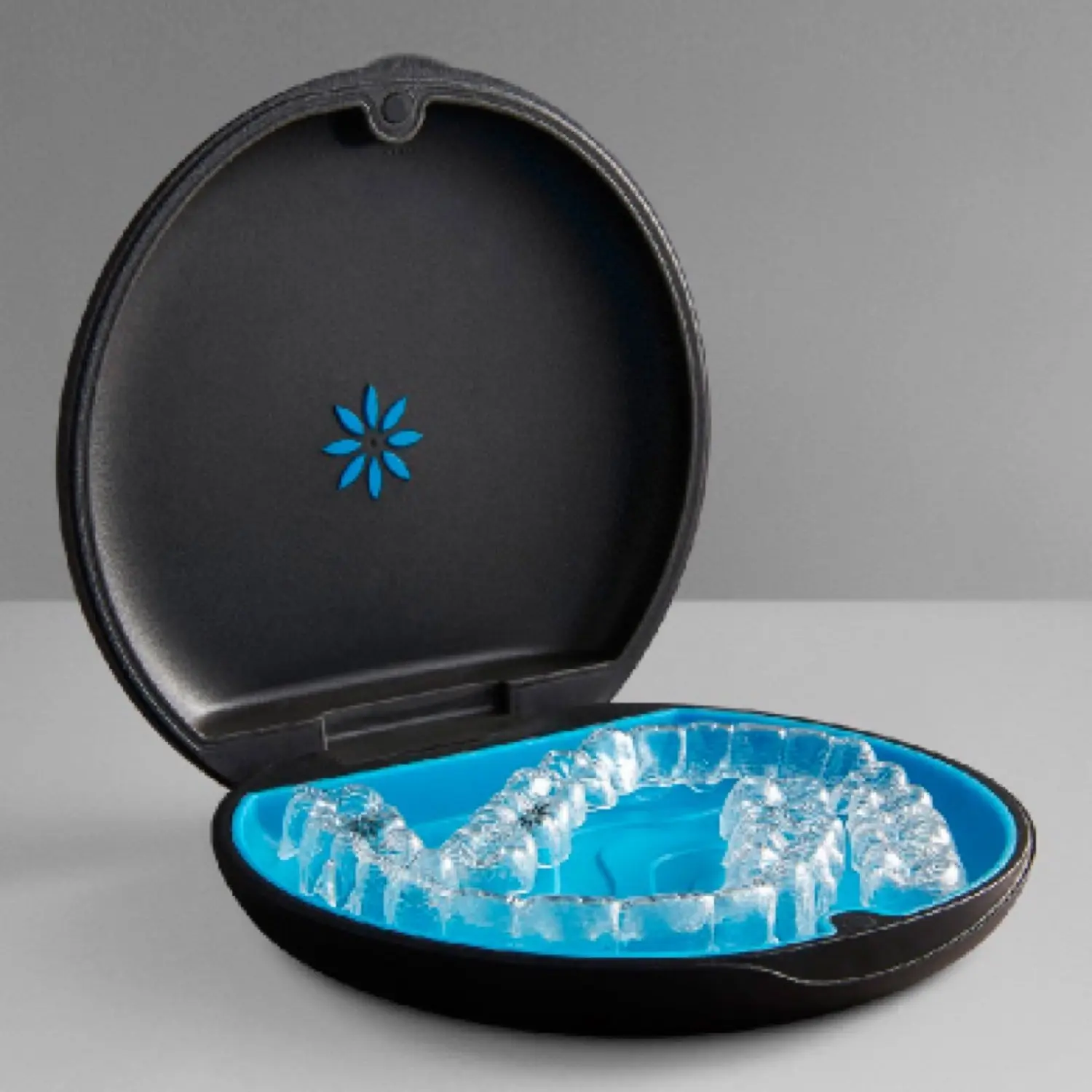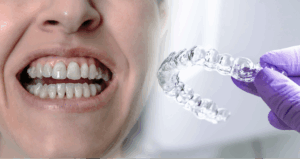Invisalign attachments play an important role in helping clear aligners work more efficiently. While not everyone needs them, many patients are surprised to learn that these tiny pieces can make a big difference in their treatment. They’re part of what helps Invisalign achieve more complex tooth movements—quietly and effectively.
If you’ve been told you might need them, or you’re just researching what to expect from treatment, this guide breaks it all down. From what Invisalign attachments are to why they’re used, we’ll explain it all in a simple, straightforward way.
What Are Invisalign Attachments?
Invisalign attachments are small, tooth-colored bumps placed directly onto certain teeth. They’re made of the same composite resin used in dental fillings. The purpose is to give the aligners something to grip onto, which helps apply more precise force to specific teeth.
These attachments don’t cover the entire tooth. They’re usually shaped and placed based on your specific treatment needs. Your orthodontist will determine the right shape and location using digital scans and a treatment plan designed just for you.
Here’s what you should know:
- They’re temporary and are removed when your treatment is complete.
- You won’t need anesthesia or drilling to get them placed.
- They’re bonded quickly and painlessly at your orthodontist’s office.
- Most people adjust to them within a few days.
- They may make your aligners feel a little tighter or trickier to remove at first.
Invisalign attachments are not used in every case. They’re usually added when more control is needed to move a tooth in a specific way. If your treatment involves turning a tooth, lifting it slightly, or fixing complex alignment issues, attachments are often part of the process.
Why You Might Need Invisalign Attachments
Not all Invisalign treatments include attachments, but many do. If your orthodontist recommends them, it’s usually because your teeth need extra guidance to move correctly. Invisalign attachments help aligners apply more focused pressure, which improves control over how each tooth shifts during treatment.
Here are the most common reasons they’re used:
1. Your Teeth Need More Precise Movements
Attachments allow for movements that clear aligners alone can’t achieve as easily. This includes:
- Rotating teeth that are turned
- Pulling down teeth that haven’t fully come in
- Adjusting teeth that are severely tilted or angled
2. You’re Treating Moderate to Complex Cases
In mild cases, aligners may work fine without help. But if your treatment involves:
- Moderate to severe crowding
- Gaps that need closing
- A deep bite or crossbite
Then Invisalign attachments may be part of your plan to ensure the aligners stay on track.
3. Better Fit and Faster Results
Attachments can help your aligners fit more snugly around key teeth. That close fit can speed up certain movements and reduce the chances of delays during treatment.
4. More Predictable Outcomes
With attachments, your orthodontist can plan and guide each movement with more accuracy. This makes it easier to reach your end goal without needing extra refinements or mid-course corrections.
Even though Invisalign attachments add an extra step to the process, they often lead to better and more consistent results. For many patients, they’re a small but important part of making treatment successful.
Types of Invisalign Attachments and Placement
Not all Invisalign attachments are the same. The shape, size, and placement of each one depend on what your treatment needs to accomplish. These tiny resin bumps might look simple, but there’s a lot of planning behind how they’re used.
Common Attachment Shapes
Each shape serves a purpose. Your orthodontist chooses them based on the direction and type of movement needed.
- Rectangular: Often used for tipping or rotating teeth
- Ellipsoid (oval): Used for subtle movements or anchoring
- Beveled: Designed to guide teeth in a specific direction
- Circular: Typically placed on back teeth for support
Strategic Placement
Attachments aren’t placed randomly. They go on specific teeth that need more movement or control. For example:
- Front teeth may need attachments to help with rotations
- Molars might get attachments for anchoring aligners
- Premolars could support vertical movement
Orthodontists place each attachment with precision. They use digital scans to map out the placement, and a custom template helps apply them exactly where they need to go.
Do You Get Attachments on All Teeth?
Usually not. Most people have them on a few selected teeth—often just six to eight total. The number and location vary widely based on your treatment plan.
Invisalign attachments may look small, but their impact on your treatment is significant. They give your aligners the extra grip needed to move your teeth exactly where they should go.
Do Invisalign Attachments Affect Appearance or Comfort?
It’s common to wonder if Invisalign attachments will change how your smile looks or feels during treatment. Since they’re visible when your aligners are off, some patients have concerns. But most people adjust quickly and find they don’t interfere much with daily life.
Appearance: Are They Noticeable?
- Tooth-colored material: Attachments are made to match your natural teeth, which helps them blend in.
- More visible on front teeth: If you have attachments on your front teeth, they may be slightly noticeable when you’re not wearing aligners.
- Covered by aligners: When aligners are in, attachments usually aren’t visible unless someone is looking closely.
In short, they’re discreet. They don’t attract much attention, especially when you wear your aligners as directed.
Comfort: What Do They Feel Like?
- Slight bumpiness at first: You may feel small bumps when you run your tongue over your teeth, but most people get used to this in a few days.
- Minimal irritation: Some people experience mild discomfort where the attachments touch the inside of their lips or cheeks, but this usually fades quickly.
- Aligner removal can be tougher: Attachments create a tighter fit, so removing your aligners might feel more difficult at first.
Eating and Cleaning Tips
Having Invisalign attachments means being a little more mindful with meals and hygiene. Here’s how to manage it:
- Eat with aligners out: Always remove your aligners when eating to avoid damage to both the trays and the attachments.
- Brush carefully: Food can collect around the attachments. Use a soft-bristled toothbrush and brush after meals.
- Watch for staining foods: Coffee, tea, and tomato sauce can discolor attachments if you don’t brush soon after eating.
Most people find that Invisalign attachments don’t get in the way of normal life. After a short adjustment period, they become just another part of the process.
Caring for Your Invisalign Attachments
Once you have the Invisalign attachments, it’s important to take care of them properly. Good habits can help prevent discoloration, keep your teeth clean, and make sure your attachments stay secure throughout treatment.
Daily Cleaning Tips
Keeping your teeth and attachments clean is key. Plaque can build up around them if you’re not careful, which can lead to staining or irritation.
Here’s what to do:
- Brush after every meal to keep food from sticking to attachments
- Use a soft-bristled toothbrush to gently clean around each bump
- Rinse with water or mouthwash if brushing isn’t possible right away
- Floss daily, making sure to clean between teeth where attachments aren’t located
Foods to Avoid
Invisalign attachments are strong, but they can still be affected by what you eat. Some foods increase the risk of staining or damaging the composite material.
Limit or avoid:
- Sticky foods like caramel or gum
- Hard foods like nuts or ice
- Dark-colored drinks like coffee, red wine, and soda
If you do eat or drink any of these, rinse or brush soon after to reduce the chance of staining.
Tips for Keeping Aligners in Good Shape
Since the aligners press against the attachments, you’ll want to take a bit of extra care when removing them:
- Use both hands to gently remove the aligners without tugging too hard
- Start at the back and work your way forward
- Consider using an aligner removal tool if they feel too snug
Caring for your Invisalign attachments is a simple task, but it does take consistency. Good hygiene and mindful habits will help you get the most out of your treatment with fewer delays or issues.
Are There Any Drawbacks to Invisalign Attachments?
Invisalign attachments come with a few minor downsides, but most patients adjust quickly.
Things to Keep in Mind:
- Slight visibility: They can be seen when aligners are off, especially on front teeth.
- Tight fit: Aligners may be harder to remove at first.
- Extra cleaning: Attachments need careful brushing to avoid plaque buildup.
- Mild irritation: Lips or cheeks may feel sore for a day or two.
These issues are usually temporary and don’t interfere much with daily life. Most patients find the benefits worth it.
Find Out if Invisalign Attachments Are Part of Your Best Treatment Option
Invisalign attachments can make a big difference in how well your aligners work. They’re often recommended for more precise or complex tooth movements, helping patients get better results in less time.
At Orthodontic Excellence, our experienced team—led by Dr. Megha Anand, a trusted orthodontist in Newcastle—will explain every step of your treatment. Whether you’re considering braces in Newcastle or exploring Invisalign in Newcastle, we’ll help you understand what your smile needs and why.
Book a consultation with Orthodontic Excellence to get a clear, personalized plan designed around your smile goals.



